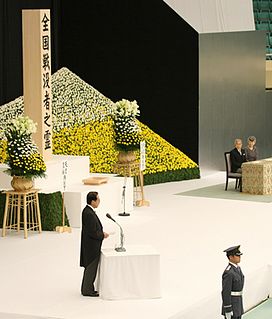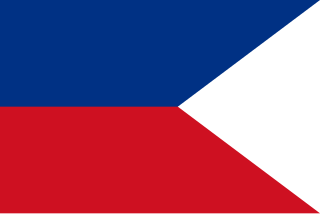 W
WThe 1964 Summer Olympics , officially the Games of the XVIII Olympiad and commonly known as Tokyo 1964, were an international multi-sport event held from 10 to 24 October 1964 in Tokyo, Japan. Tokyo had been awarded the organization of the 1940 Summer Olympics, but this honor was subsequently passed to Helsinki due to Japan's invasion of China, before ultimately being cancelled due to World War II. Tokyo was chosen as the host city during the 55th IOC Session in West Germany on 26 May 1959.
 W
WIn 1968 and 1969, Japanese universities were wracked by student protests that ultimately forced the closure of campuses nationwide. Known as daigaku funsō or daigaku tōsō, the protests were part of the worldwide protest cycle in 1968 and the greater late-1960s Japanese protest cycle, including the Anpo protests of 1970 and the struggle against the construction of Narita Airport. Students initially demonstrated against practical issues in universities, and they eventually formed the Zenkyōtō in mid-1968 to organize themselves. The protests were dispersed in 1969 by the Act on Temporary Measures concerning University Management.
 W
WThe Asama-Sansō incident was a hostage crisis and police siege at a mountain lodge near Karuizawa in Nagano Prefecture, Japan, which lasted from February 19 to February 28, 1972. The police rescue operation on the final day of the standoff was the first marathon live television broadcast in Japan, lasting 10 hours and 40 minutes.
 W
WMasamune (正宗), also known as Gorō Nyūdō Masamune , was a medieval Japanese blacksmith who is widely recognized as Japan's greatest swordsmith. He created swords and daggers, known in Japanese as tachi and tantō respectively, in the Sōshū school. However, many of his forged tachi were made into katana by cutting the tang (nakago) in later times. For this reason, his only existing works are katana and tantō. No exact dates are known for Masamune's life. It is generally agreed that he made most of his swords between 1288 and 1328. Some stories list his family name as Okazaki, but some experts believe this is a fabrication to enhance the standing of the Tokugawa family.
 W
WDaigo Fukuryū Maru was a Japanese tuna fishing boat with a crew of 23 men which was contaminated by nuclear fallout from the United States Castle Bravo thermonuclear weapon test at Bikini Atoll on March 1, 1954.
 W
WThe Japanese economic miracle is known as Japan's record period of economic growth between the post-World War II era to the end of the Cold War. During the economic boom, Japan rapidly became the world's second largest economy. By the 1990s, Japan's demographics began stagnating and the workforce was no longer expanding as it did in the previous decades, despite per-worker productivity remaining high.
 W
WUSS Mingo (SS-261) — a Gato-class submarine — was the first ship of the United States Navy to be named for the mingo snapper.
 W
WUSS Mingo (SS-261) — a Gato-class submarine — was the first ship of the United States Navy to be named for the mingo snapper.
 W
WThe National Memorial Service for War Dead is an official, secular ceremony conducted annually on August 15, by the Japanese government at the Nippon Budokan in Tokyo, Japan. The ceremony is held to commemorate the victims of World War II. The first memorial ceremony was held on May 2, 1952.
 W
WAbductions of Japanese citizens from Japan by agents of the North Korean government took place during a period of six years from 1977 to 1983. Although only 17 Japanese are officially recognized by the Japanese government as having been abducted, there may have been hundreds of others. The North Korean government has officially admitted to abducting 13 Japanese citizens.
 W
WThe Allied Occupation of Japan was a military occupation of Japan in the years immediately following Japan's defeat in World War II. Led by the United States with the support of the British Commonwealth, the occupation lasted from 1945 to 1952 and involved a total of nearly 1 million Allied soldiers. The occupation was overseen by American general Douglas MacArthur, who was appointed Supreme Commander for the Allied Powers by President Harry Truman; MacArthur was succeeded as Supreme Commander by General Matthew Ridgway in 1951. Unlike in the occupation of Germany, the Soviet Union had little to no influence over the occupation of Japan, declining to participate because it did not want to place Soviet troops under MacArthur's direct command.
 W
WThe Treaty of San Francisco , also called the Treaty of Peace with Japan , re-established peaceful relations between Japan and the Allied Powers on behalf of the United Nations by ending the legal state of war and providing for redress for hostile actions up to and including World War II. It was signed by 49 nations on 8 September 1951, in San Francisco, California, U.S. at the War Memorial Opera House, with three member states refusing to sign: The Soviet Union, Poland and Czechoslovakia, all part of the Soviet Bloc, and a further two states refused to send representatives: India and Yugoslavia. Italy and "China" were not invited, the latter due to disagreements on whether the Republic of China or the People's Republic of China represented the Chinese people. Korea was also not invited due to a similar disagreement on whether South Korea or North Korea represented the Korean people.
 W
WThe Security Treaty Between the United States and Japan was a treaty signed on 8 September 1951 in San Francisco, California by representatives of the United States and Japan, in conjunction with the Treaty of San Francisco that ended World War II in Asia. The treaty was imposed on Japan by the United States as a condition for ending the Occupation of Japan and restoring Japan's sovereignty as a nation. It had the effect of establishing a long-lasting military alliance between the United States and Japan.
 W
WThe Anpo protests, also known as the Anpo struggle in Japanese, were a series of massive protests in Japan from 1959 to 1960, and again in 1970, against the US-Japan Security Treaty, which is the treaty that allows the United States to maintain military bases on Japanese soil. The name of the protests comes from the Japanese term for "Security Treaty," which is Anzen Hoshō Jōyaku (安全保障条約), or just Anpo (安保) for short.
 W
WThe Sino-Japanese Peace Treaty, formally the Treaty of Peace between the Republic of China and Japan and commonly known as the Treaty of Taipei, was a peace treaty between Japan and the Republic of China (ROC) signed in Taipei, Taiwan on 28 April 1952, and took effect on August 5 the same year, marking the formal end of the Second Sino-Japanese War (1937–45).